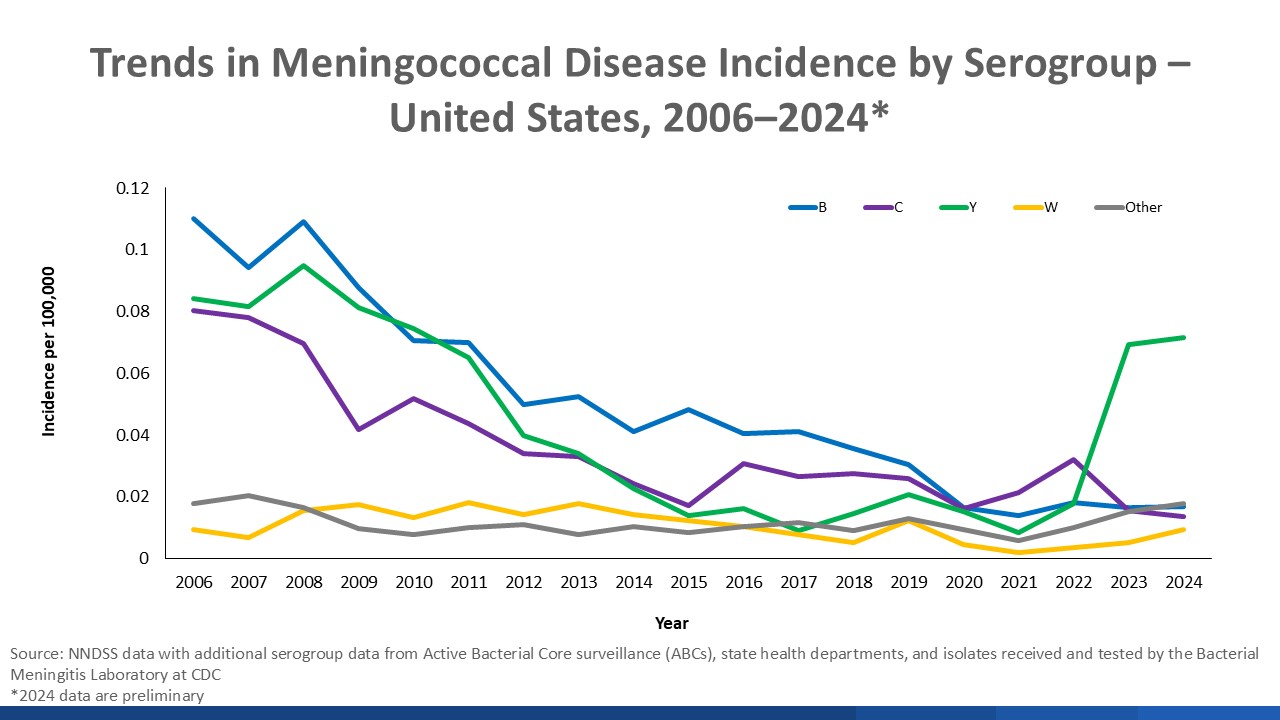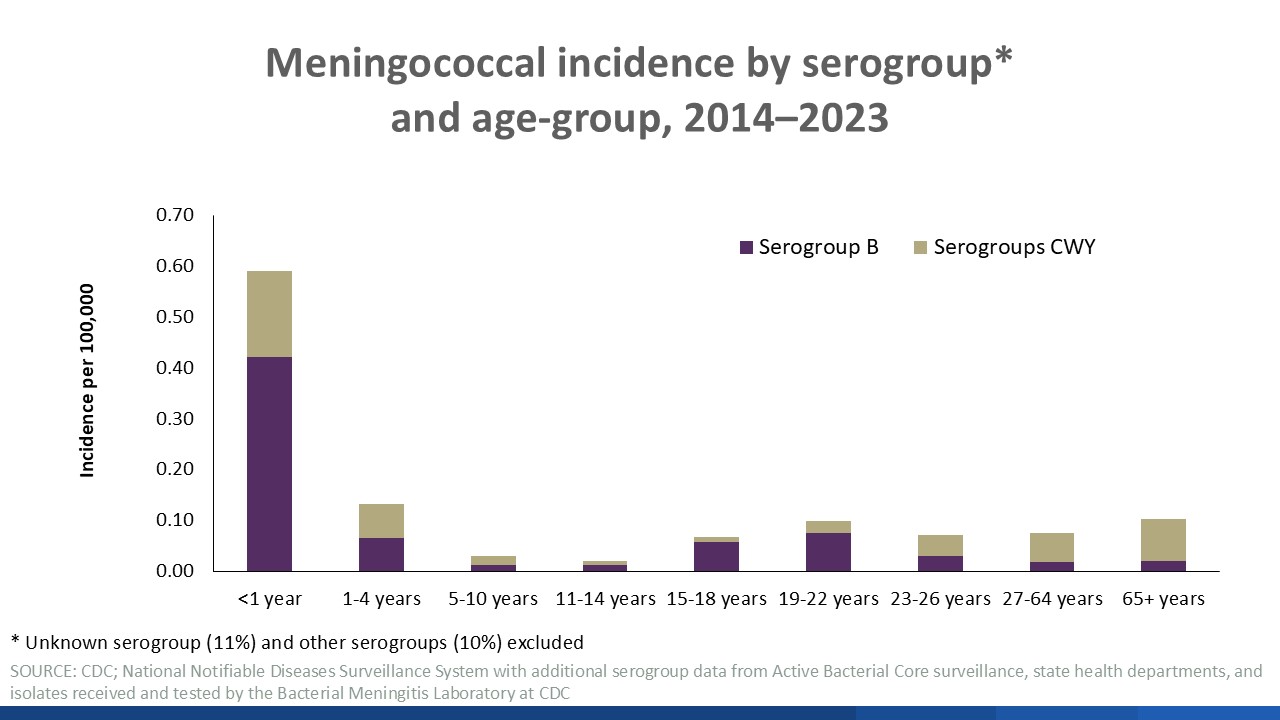Key points
- Rates of meningococcal disease in the United States increased in 2023.
- Public health officials track all meningococcal disease in the United States using multiple surveillance systems.
- Health departments respond to every case to implement control measures to reduce disease spread.

Latest news

Disease trends since 2021
U.S. cases of meningococcal disease have increased sharply since 2021 and now exceed pre-pandemic levels. In 2024, 503 confirmed and probable cases were reported based on preliminary data. This is the largest number of U.S. meningococcal disease cases reported since 2013.
Neisseria meningitidis serogroup Y drives much of this recent increase.
People disproportionately affected by the increase include:
- People between the ages of 30 and 60 years
- Black or African American people
- Adults with HIV
Recommendations
Public health officials should encourage healthcare providers to:
- Maintain a heightened index of suspicion for meningococcal disease and recognize who can be affected
- Be aware of atypical presentations
- Ensure up-to-date vaccination
Heightened index of suspicion: This is particularly important among the disproportionately affected populations. However, meningococcal disease may affect people of any age or demographic group.
Atypical presentations: Patients with meningococcal bloodstream infection or septic arthritis may present without typical meningitis symptoms.
Vaccine recommendations: Ensure everyone who's recommended to receive meningococcal vaccination is up to date. For people with HIV, recommended MenACWY vaccination includes:
- A 2-dose primary series
- Booster doses every 3 to 5 years depending on age
Data systems
National Notifiable Diseases Surveillance System
Meningococcal disease is a reportable condition in all states.
CDC collects national information about meningococcal disease through the National Notifiable Diseases Surveillance System (NNDSS). CDC receives NNDSS data each week.
Active Bacterial Core surveillance
CDC also collects information from laboratories in 10 areas of the country through Active Bacterial Core surveillance (ABCs). ABCs is part of CDC's Emerging Infections Program.
Enhanced surveillance
Health departments from all 50 states and several large jurisdictions collect enhanced meningococcal disease data and isolates. This enhanced surveillance began in 2015 in order to
- Collect more complete data to monitor disease epidemiology
- Inform policy decisions
- Collect isolates from a broad and representative population
How the data are interpreted
Seasonal disease trends
The number of cases generally peaks each year in January, February, and March.
Disease trends overall
U.S. rates of meningococcal disease have declined sharply since the 1990s.
Some age groups have higher incidence rates
Anyone can get meningococcal disease. However, rates of disease are highest in children younger than 1 year old, followed by a second peak in adolescence. Among adolescents and young adults, those 16 through 23 years old have the highest rates of meningococcal disease.
Some serogroups cause more disease in certain age groups
The proportion of cases caused by each serogroup varies by age group.

Antimicrobial resistance trends
Since 2019, CDC has detected penicillin- and ciprofloxacin-resistant serogroup Y meningococcal isolates in the United States.
Data reporting
NNDSS
View NNDSS infectious disease data tables.
ABCs
View ABCs annual reports for N. meningitidis.
Enhanced surveillance
View meningococcal disease data, including case counts and incidence by serogroup and age. Reports also include vaccination history of cases, meningococcal related deaths, incidence by serogroup and college attendance, and HIV status.
- 2023 final surveillance report
- 2022 final surveillance report
- 2021 final surveillance report
- 2020 final surveillance report
Older surveillance reports can be found at CDC Stacks.
Data definitions
The Council of State and Territorial Epidemiologists released the most recent case definition for meningococcal disease in 2015.
